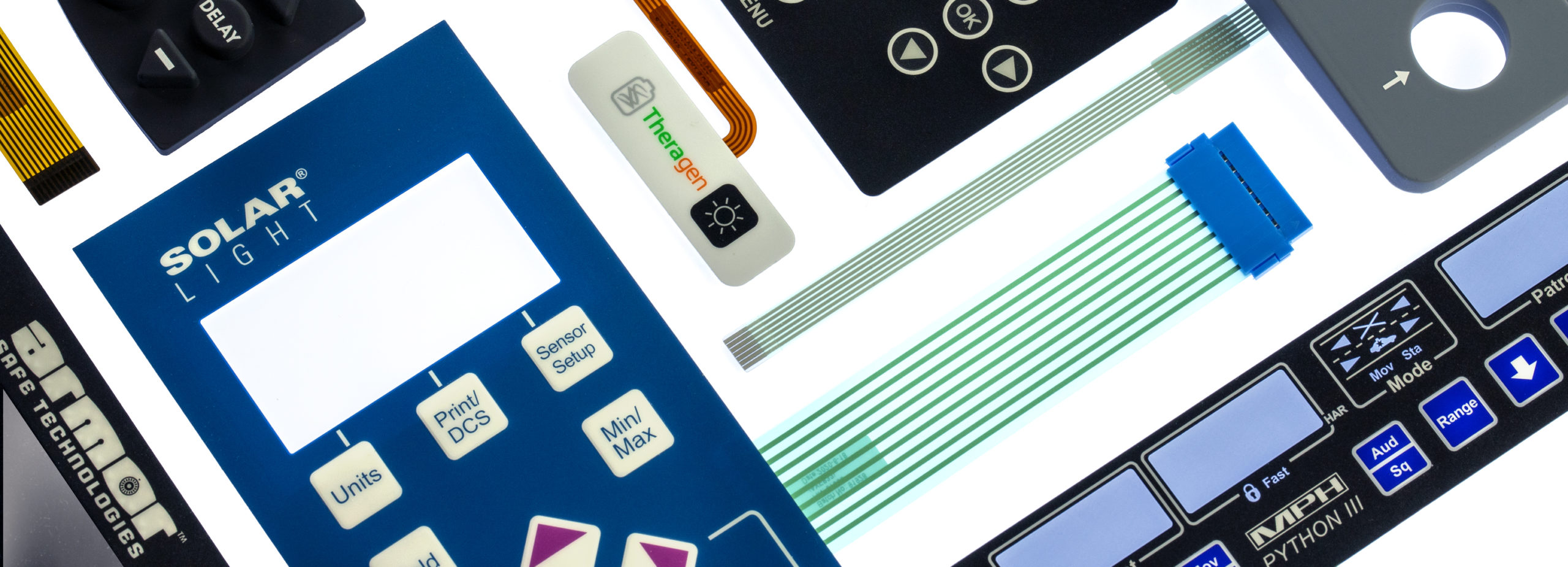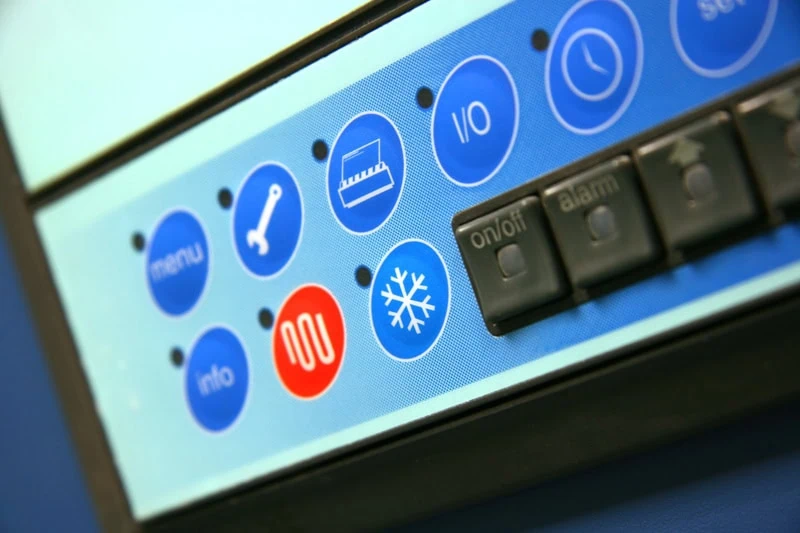How Membrane Switches Improve Performance in Industrial and Customer Applications
How Membrane Switches Improve Performance in Industrial and Customer Applications
Blog Article
Membrane Layer Switches Over Explained: A Comprehensive Guide to Their Advantages
Membrane layer changes represent a flexible and innovative option for developing user interfaces throughout a range of markets. As industries progressively look for reputable and reliable control user interfaces, understanding the particular benefits and applications of membrane layer changes comes to be important.
What Are Membrane Layer Switches?

When pressure is applied to the membrane switch, the layers make call, finishing an electrical circuit. This straightforward mechanism allows for a wide variety of applications, from consumer electronic devices to commercial equipment. Membrane layer buttons are usually created to be resistant and waterproof to dust and contaminants, making them appropriate for atmospheres where durability is important.
Furthermore, the flexibility of the materials made use of in membrane layer switches helps with innovative layouts that can adapt different forms and measurements. This flexibility adds to their popularity in varied fields, consisting of clinical devices, automobile controls, and home devices. Generally, membrane switches over stand for a crucial component in modern-day user interface technology, linking the space between users and electronic systems.
Trick Benefits of Membrane Buttons
Amongst the myriad of interface choices available, membrane switches stick out for their one-of-a-kind combination of advantages. One of the key advantages is their small and lightweight style, which enables combination into a variety of gadgets without including significant bulk. This is especially advantageous in applications where room is restricted.
In addition, membrane changes offer toughness and resistance to environmental variables. They are usually created with products that can withstand moisture, dirt, and different chemicals, making them appropriate for harsh problems. This longevity adds to a much longer life expectancy contrasted to conventional mechanical buttons.
One more considerable benefit is the flexibility in customization. Membrane switches can be published with different graphics, shades, and textures, permitting customized styles that meet details branding or functional demands. This flexibility encompasses the variety of layers and circuit choices, offering engineers with multiple arrangements.
Moreover, the responsive feedback given by some membrane switches improves individual experience, making them more user-friendly to run. The simplicity of cleansing and upkeep better strengthens membrane layer buttons as a functional selection in both customer and industrial applications. Generally, these key benefits make them a recommended option for lots of developers and producers
Applications in Various Industries
How do membrane switches discover their place across varied markets? Their adaptability and functionality make them essential parts in sectors varying from health care to consumer electronic devices. In clinical gadgets, membrane layer buttons are utilized for their ease of cleaning and resistance to contamination, making certain hygiene in settings where sterility is critical.
In the customer electronic devices market, these switches give sleek, user-friendly user interfaces that improve product looks while maintaining longevity versus deterioration. Automotive applications gain from membrane layer switches over also, where they are made use of in control panels and control board, using trustworthy efficiency in challenging problems.
In addition, industrial equipment utilizes membrane layer switches for control panels as a result of their effectiveness, ability to withstand rough settings, and customizable designs that satisfy details operational needs. The food industry leverages membrane buttons for their simplicity of usage and resistance to spills, making sure functional effectiveness in busy settings.
Inevitably, the flexibility of membrane switches over throughout these varied applications underscores their important duty in modern technology, improving individual communication while meeting industry-specific needs. Their continued advancement promises further assimilation right into arising fields and innovative products.
Layout and Customization Alternatives
The layout and customization options readily available for membrane layer switches are vital for customizing interfaces to fulfill particular customer demands and aesthetic preferences. These switches can be designed in different forms, dimensions, and designs, permitting seamless integration into varied applications. The flexibility in design means that makers can develop one-of-a-kind interfaces that enhance use and maintain brand identity.
Customized shades, graphics, and textures can be put on the surface of the membrane button, providing a possibility for branding and individual involvement. In addition, backlighting alternatives, such as LED lighting, can be incorporated to enhance presence in low-light conditions, hence enhancing capability.
Practical aspects can likewise be tailored, including tactile comments and actuation pressure, which can be changed to suit different individual interactions. The choice of materials, such as polyester or polycarbonate, enables variations in resilience and ecological resistance, accommodating the certain needs of different sectors.
Eventually, the considerable design and personalization capacities of membrane buttons make it possible for companies to create visually enticing and user-friendly user interfaces, guaranteeing that their products meet both functional and aesthetic needs efficiently. Membrane Switches.
Considerations for Execution
Implementing membrane layer changes calls for careful factor to consider of different variables to make sure optimal capability and customer experience. One of the main factors to consider is the designated application setting. Factors such as exposure to wetness, severe temperatures, and chemical materials can significantly affect the switch's efficiency and durability. Picking products that hold up against these problems is essential.

One more important aspect is the switch's design and design. Making certain that the responsive comments and actuation pressure line up with about his user assumptions improves use. Performing customer screening can supply valuable understandings right into the ideal design.
In addition, compatibility with digital elements have to be evaluated. The button's circuitry must straighten with the total system design, ensuring trustworthy signal transmission and decreasing interference.
Furthermore, production approaches and costs ought to be evaluated. The go now selection between customized layouts and typical models can lead and affect both spending plan time.
Lastly, take into consideration maintenance and repair. Membrane layer switches might call for certain cleaning and care procedures to preserve their appearance and performance with time. By resolving these considerations, companies can implement membrane layer buttons that fulfill their operational requirements while giving a positive user experience.

Final Thought
In final thought, membrane changes represent a sturdy and versatile control user interface appropriate for a vast array of applications across numerous industries. Their portable design, resistance to ecological factors, and customizable features boost individual experience while meeting details branding needs. As innovation proceeds to advance, the importance of membrane buttons in modern-day devices continues to be substantial, using both functionality and visual appeal. Future developments will likely even more broaden their applications and efficiency in numerous settings.
Membrane switches over stand for a functional and advanced option for producing customer interfaces throughout a variety of sectors.Comprehending the essential components of contemporary electronic user interfaces, membrane switches are a type of individual interface device that are composed of adaptable, thin layers of product. Overall, membrane changes represent an essential component in contemporary user interface technology, connecting the gap in between users and digital systems.
Among the myriad of user interface options readily available, membrane layer switches over stand out for try this out their unique combination of benefits.The layout and personalization alternatives offered for membrane switches are essential for customizing user interfaces to satisfy certain customer requirements and aesthetic choices.
Report this page